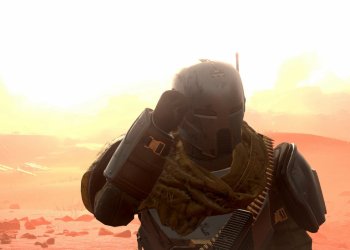From a realistic standpoint, I’ve been somewhat of a latecomer to the Monster Hunter franchise. For many years, I steered clear of the series primarily because they were tethered to handheld consoles that I wasn’t particularly interested in. Plus, to be honest, the gameplay seemed pretty lackluster.
It was only when Monster Hunter World rolled around that I finally dipped my toes in the waters, and there’s no turning back—I’m hooked! I’ve so far logged over twenty hours in Wilds, choosing to tackle the main campaign head-on before diving into any sidequests. Unfortunately, that decision left me feeling rather underwhelmed.
Typically, we don’t praise Monster Hunter for its storylines or narrative brilliance. Campaigns are more about guiding players through intricate systems and mechanics that they’ll lean on for countless hours. They function as a sort of grand tour of the game’s offerings.
Here’s the usual setup: Your team is on a quest to uncover a mysterious monster disrupting the world. As you chase this elusive creature, other beasts disrupt your mission until the final showdown reveals the cause of the upheaval. Once you tackle the campaign’s climactic battle, you’re introduced to the High Rank tier, where Monster Hunter’s true depth and challenge begin.
If we look at Wilds and World from a high-level perspective, their campaigns might seem similar. However, it’s in the finer details where one becomes an exhilarating journey while the other falls rather flat.
The allure of World lay in its campaign structure. The introduction of Zorah Magdaros as a behemoth of a monster provided a fresh kind of encounter. This giant necessitated a whole community effort just to slow its march. It was massive enough to host battles with multiple monsters on its back simultaneously.
Though ambitious, this narrative approach didn’t resonate with everyone. Battling Zorah Magdaros involved tactics like building barriers and preparing artillery—actions atypical of typical Monster Hunter gameplay.
Despite mixed reviews, I appreciated these differences. Zorah’s presence broke up the monotony and drove the story forward. As it migrated through different parts of the map, new areas would become available for exploration, letting players witness firsthand the impact on the environment. The real intrigue was in the mystery surrounding Zorah’s journey, which kept the narrative suspenseful.
In Wilds, the campaign pales in comparison. There’s no grand creature like Zorah, and while Arkveld—the main monster—is present, its appearances are few and transient. You meet it sporadically, only for it to vanish again, leaving no real urgency or mystery behind.
Instead of weaving together diverse groups in a concerted effort, this campaign feels like a series of fragmented meetings. Some monster encounters simply feel shoehorned into missions with little forethought.
There’s an unmistakable sense that a unifying element once existed but was somehow lost along the way. Certain dialogues or cinematic hints suggest deeper layers, yet these are never fully explored.
The subplot of the ancient civilization and its cataclysmic downfall due to weather technology feels half-hearted, resembling something more suitable for a lore compendium rather than a gripping campaign narrative.
Wilds reflects a broader trend, eschewing charm in favor of accessibility, yet in doing so, it might have altered the wrong components. While we might soon overlook Wilds’ campaign in favor of enjoying its successes and enduring its flaws, I can’t help but dream about what a true successor to World’s captivating story might have looked like.









![[Title Rewrite] [Winners Announced for Free Game Giveaway] Sorry We’re Closed (Switch + PS5)](https://www.gameria.net/wp-content/uploads/2025/04/Title-Rewrite-Winners-Announced-for-Free-Game-Giveaway-Sorry-Were-360x180.jpg)































